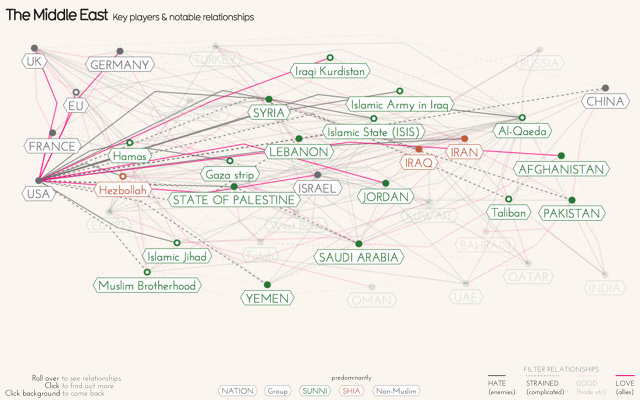The relationships between all the players in the Middle East can seem impossible to unknot: a mass of countries, states, and political groups that are hopelessly intertwined. Thanks to David McCandless of Information Is Beautiful, we have a tool for trying to make sense of it all.

Using data from the New York Times, Guardian, CIA World Factbook, and other sources, McCandless has created a useful visualization of the relationships between parties with vested interests in the Middle East. That includes countries, extremist groups, and unrecognized political states. Click on the name of a country or group, and you untangle how it is connected with another Middle Eastern player, as well as view a brief synopsis of the relationship between the two.
Even a cursory look will reveal some surprising facts. For example, America is often viewed as a loathed interloper in Middle Eastern affairs, but at least officially, the U.S. enjoys predominantly friendly relationships with most of the national players in the Middle East (with exceptions like Syria, China, and Iraq). Less surprisingly, extremist groups like the Islamic Jihad, the Muslim Brotherhood, and Hamas all have an axe to grind with us.
But the U.S. is not the most hated player in the Middle East. Nor is Israel. Actually, it's the Islamic State, more often known as ISIS. The group is hated by everyone from the U.S., to other violent jihadist organizations like Al-Qaeda. There's practically no group in the Middle East ISIS can call a friend. While the enemy of your enemy is often your friend, most groups still consider the guy who lops off the heads of your enemy's journalists to be a total psycho, even in the Middle East.
Check out the full interactive here.


















